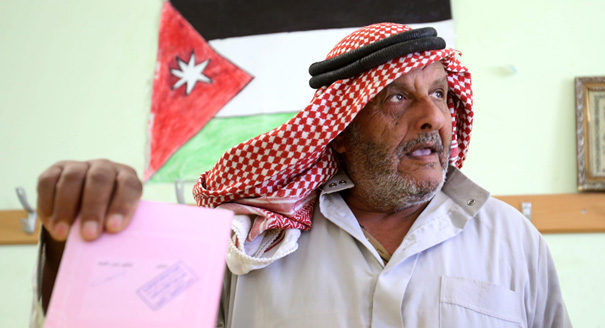Jordan’s parliamentary elections on September 20 have produced a parliament that will contain opposition figures for the first time in a decade.
The new legislature will include 15 deputies from the Islamic Action Front, the political arm of Jordan’s Muslim Brotherhood (fewer than the 20 that were expected), as well as a larger proportion of women deputies than ever before—20 out of 130 members, more than the 15 required under the quota system. The 2016 electoral law set aside the despised one-man one-vote system in favor of a form of proportional representation, and the Independent Electoral Commission ran the elections competently and consistently by most accounts. All of that was good news.
Many questions remained, however, about what these elections signified in the broader context of governance in Jordan. Did the redistricting for these elections redress longstanding gerrymandering? Did the elections constitute a meaningful move in the direction of King Abdullah’s stated objective of “developing political parties and bringing forth parliamentary governments?” And will they help to restore the confidence of jaded Jordanian voters, after a decade in which voting was seen as an empty game manipulated by the government?
Redistricting for the recent elections brought electoral districts into closer alignment with the country’s provincial boundaries. There are now 23 districts, one for each of the 12 provinces, plus extra districts for larger cities such as Amman, Irbid, and Zarqa, as well as Bedouin areas. Still, the longstanding imbalance in representation between rural areas (in which the monarchy’s tribal supporters reside) and urban areas (inhabited by Jordanians of Palestinian origin, many of whom support the Islamic Action Front or other political movements) persists.
For example, districts in areas of Amman and Zarqa heavily populated by Jordanian Palestinians have only half as many seats as their percentage of the population would dictate. In contrast, the southern districts of Maan and Kerak, populated by East Bank Jordanians strongly supportive of the monarchy, have twice or even four times as many seats as their smaller populations mandate.
Voters turn out more heavily in the south as well. This is largely because of tribal solidarity, but perhaps also in recognition of their outsized representation. As an international observer, one of the authors, Michele Dunne, witnessed a turnout of nearly 55 percent of voters in the southern district of Tafila on September 20, with roughly one-third of the voters appearing to be under age of 35. By contrast, international observers in Amman and other northern cities saw only a trickle of voters, few of them young.
The proportional representation system outlined a system in which all candidates ran on lists for their district. The fact that it was an open list system—giving voters the right to vote for a list, and for one or more candidate within that list—created a situation wherein candidates cooperated to form lists, but at the same time competed with each other within those lists. Candidates and voters understood that under this form of proportional representation, most lists would not succeed in getting more than one or two members elected, which meant that strong candidates were motivated not to run together. The Islamic Action Front adopted a strategy of spreading its stronger candidates in any given district among several lists in order to maximize its chances.
Thus, an electoral system allegedly designed to encourage the formation of political parties actually encouraged the fragmentation of political groupings—not much different from the old one-man, one-vote system. In turn, a parliament elected under such a system is likely to be structurally weak, unable to exercise proper legislative powers, or monitor the executive branch.
If one adds the heavy and at times obvious interference by the executive—particularly the intelligence services—in the work of parliament in the past, it is not difficult to understand why a huge gap in trust has emerged between the Jordanian population and its political institutions, particularly parliament. A national poll in 2016 sponsored by the U.S. International Republican Institute showed that 87 percent of Jordanians could not name one positive achievement of the outgoing parliament, and that confidence in the government had dropped significantly. This lack of faith in the system was reflected in the anemic voter turnout this year, estimated at 37 percent. The figure was lower than the 41 percent reported in 2013, despite an aggressive campaign by the Independent Election Commission to get out the vote.
Still, there are bright spots. The presence of a real opposition in parliament, even if slim, should contribute to bridging the trust gap. The Maan (“Together”) list, calling for a secular, democratic state, was able to win two seats in the same Amman district despite being aggressively and unfairly attacked by the Islamists as atheists. Whether such a liberal trend can grow, at a time when incumbents who also pushed the cause of democracy lost their seats, will be worth watching.






